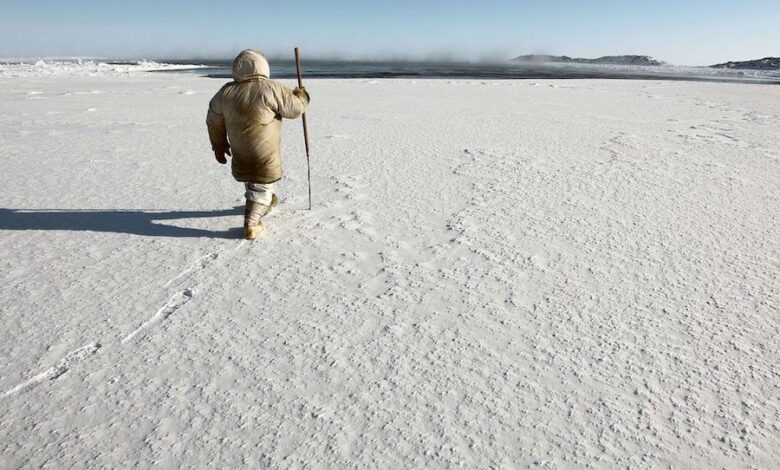
Here, an Inuit hunter prepares to test the safety of sea ice near Sanikiluaq, Nunavut, with a harpoon. Photo Credit: Courtesy of Arctic Eider Society
SocietyTechnology CanadaTradition Meets Tech: an Indigenous-Powered App for a Better Environment
Through an Inuit-developed app, Indigenous communities in the North can combine scientific data and traditional knowledge to keep track of the environment and better manage wildlife, thus advancing their self-determination by controlling how the information is shared.
“We have lived in the environment for centuries. We know about the wildlife,” states Lucassie Arragutainaq, a Sanikiluaq Hunters and Trappers Association manager and co-founder of the local nonprofit Arctic Eider Society. Thanks to the app named Siku – the Inuktitut word for “sea ice” – Northerners are documenting information “in a way that [other] people will understand.”
Inuit leaders and hunters from Sanikiluaq, Nunavut, the northernmost territory in Canada, first had the idea for the app a decade ago, with contributors starting to upload information in 2015. Communities from Alaska to Greenland have gathered their ancestral knowledge to track changes in the environment, keep tabs on local wild foods, and make the best decisions on wildlife management. In 2019, Siku was relaunched as a legitimate social network offered in multiple languages – Inuktitut, Cree, Innu, and Greenlandic, to name a few – with maps with traditional place names. In early 2024, more than 25,000 people from at least 120 communities made more than 75,000 posts showing everything from the breath and bounty of northern foods to the impacts of climate change and industrial activity. Siku captures the everyday Indigenous life in a rapidly changing landscape. The app is a valuable tool for life on ice: it includes weather reports, sea ice forecasts, and critical safety information. “When I go out on the land with family, we go a long distance, and the Siku app can show which area we are in. It’s precise,” says Karen Nanook, who lives in Taloyoak, Nunavut.



